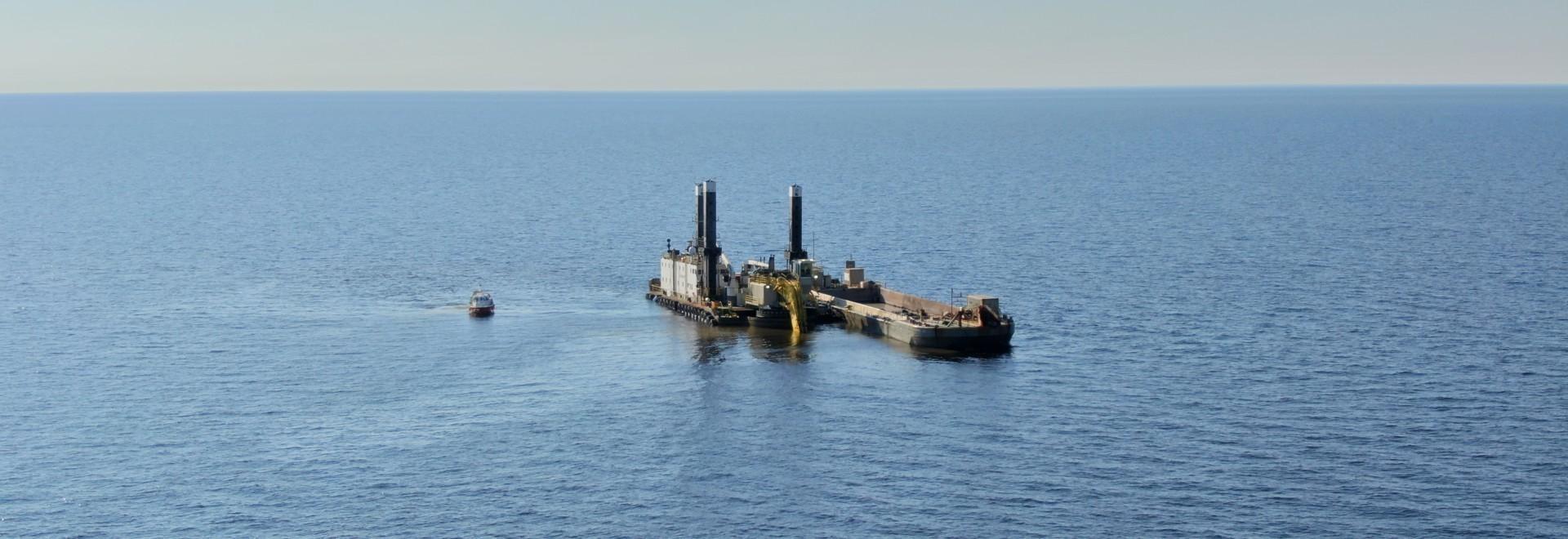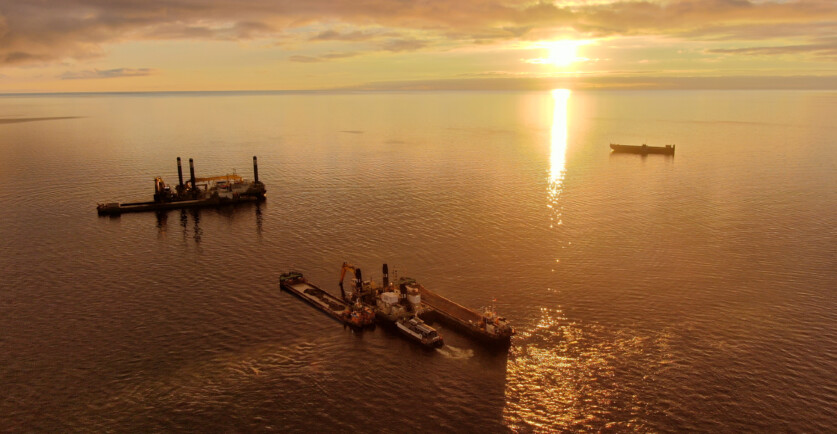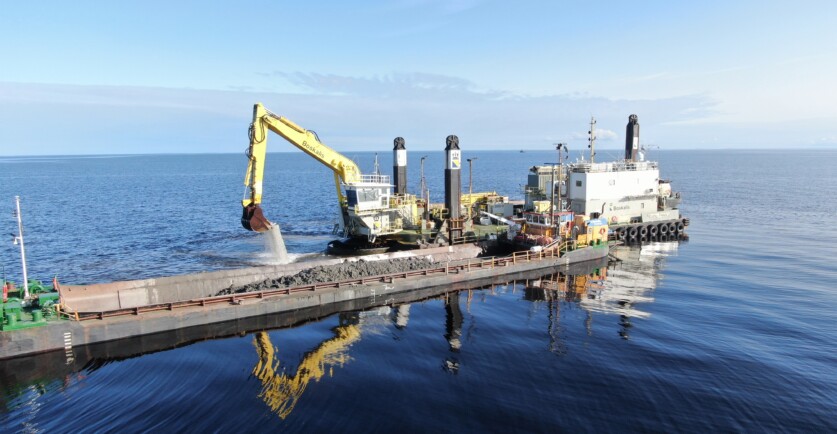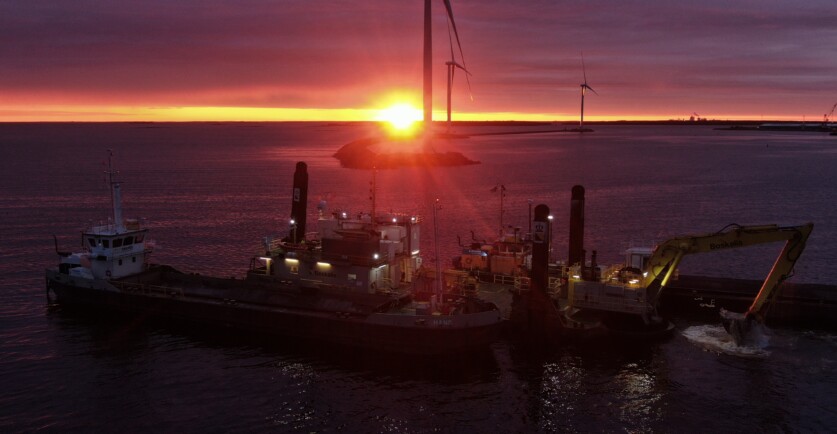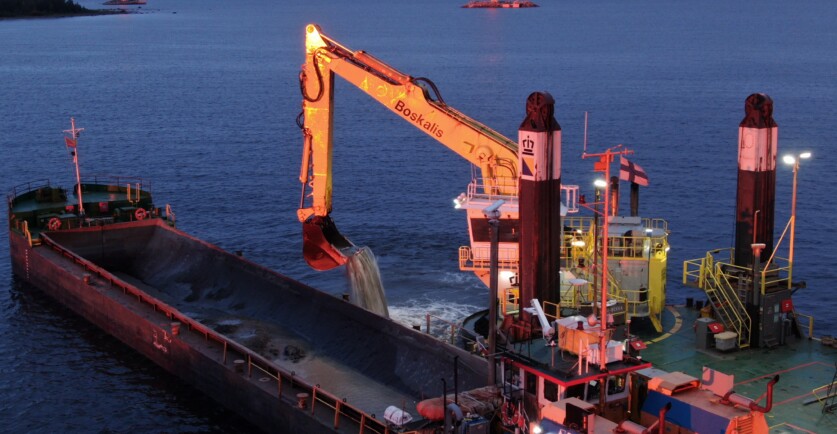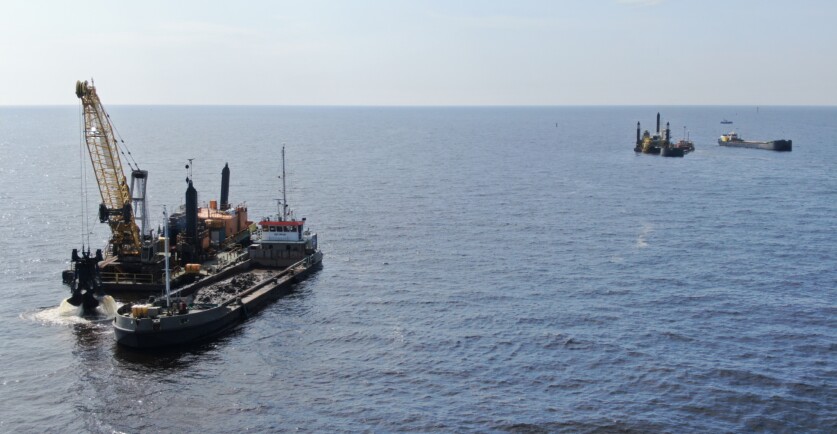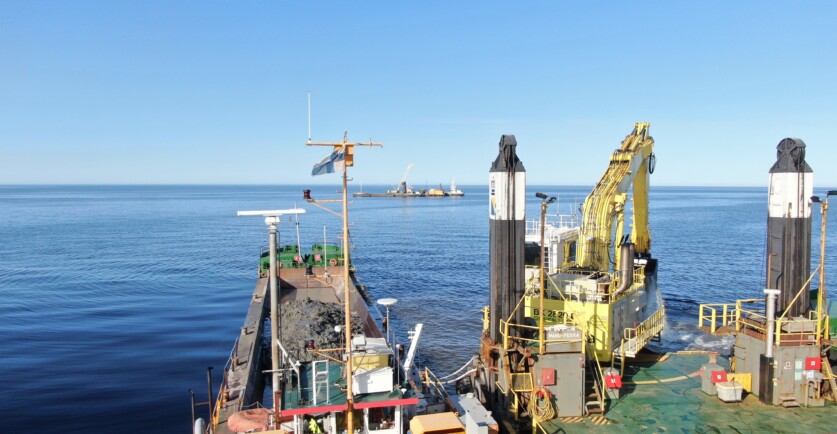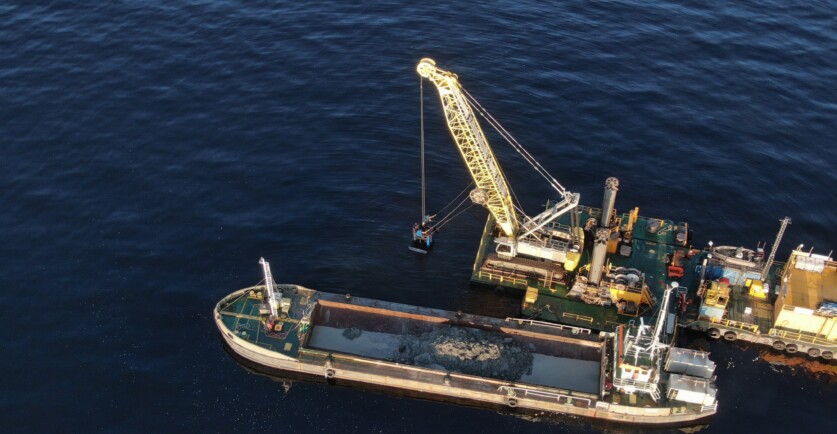The Kemi Ajos Harbour fairway deepening project aims to serve more efficiently the transport needs of the forest and mining industries in the northern region. At the beginning of 2021, Metsä Fibre made the decision to build in Kemi a EUR 1.6 billion euro bioproduct mill, the largest investment ever made by the Finnish forest industry in Finland. At the same time, the Finnish government made significant decisions on infrastructure projects to improve Kemi’s Ajos fairway as well as rail and road connections to the pulp mill. Production at the mill started in late 2023.
Dredging work began on Kemi’s Ajos fairway
Project Manager Sami Soikkeli said that Kemi’s Ajos fairway was deepened from the present 10 metres to 12 metres to serve larger ships arriving at the harbour.
“In the project, in addition to carrying out dredging and dumping work, we also installed safety devices in the fairway. Around one million cubic metres of material was dredged from the fairway.”
Dredging sites far out on the open sea
Several of Terramare’s vessels, such as backhoe dredgers, barges and tugs as well as dredging, survey and shift-change vessels, were heavily engaged in the fairway dredging work. After project launch at the beginning of June in 2022, a backhoe dredger from our Dutch parent company arrived for the first time at the northernmost port of the Gulf of Bothnia to strengthen our dredging team. Veitsiluoto Harbour served as a support base for our vessels.
There were nearly 30 sites to dredge on the 45 kilometres long fairway. The largest dredging masses in terms of volume were excavated at distances of 2, 40 and 45 kilometres from the harbour. The furthest dredging site was 51 kilometres from the harbour.
“The freezing of the Baltic Sea begins in the northern parts of the Gulf of Bothnia, so the dredging season in the north is usually shorter compared with the dredging season on Finland’s more southern coasts of Finland,” said Soikkeli. “As the dredging season in the north is usually shorter, work took place at the site around the clock in the summer season.”
The dredging work was completed during August 2023.

